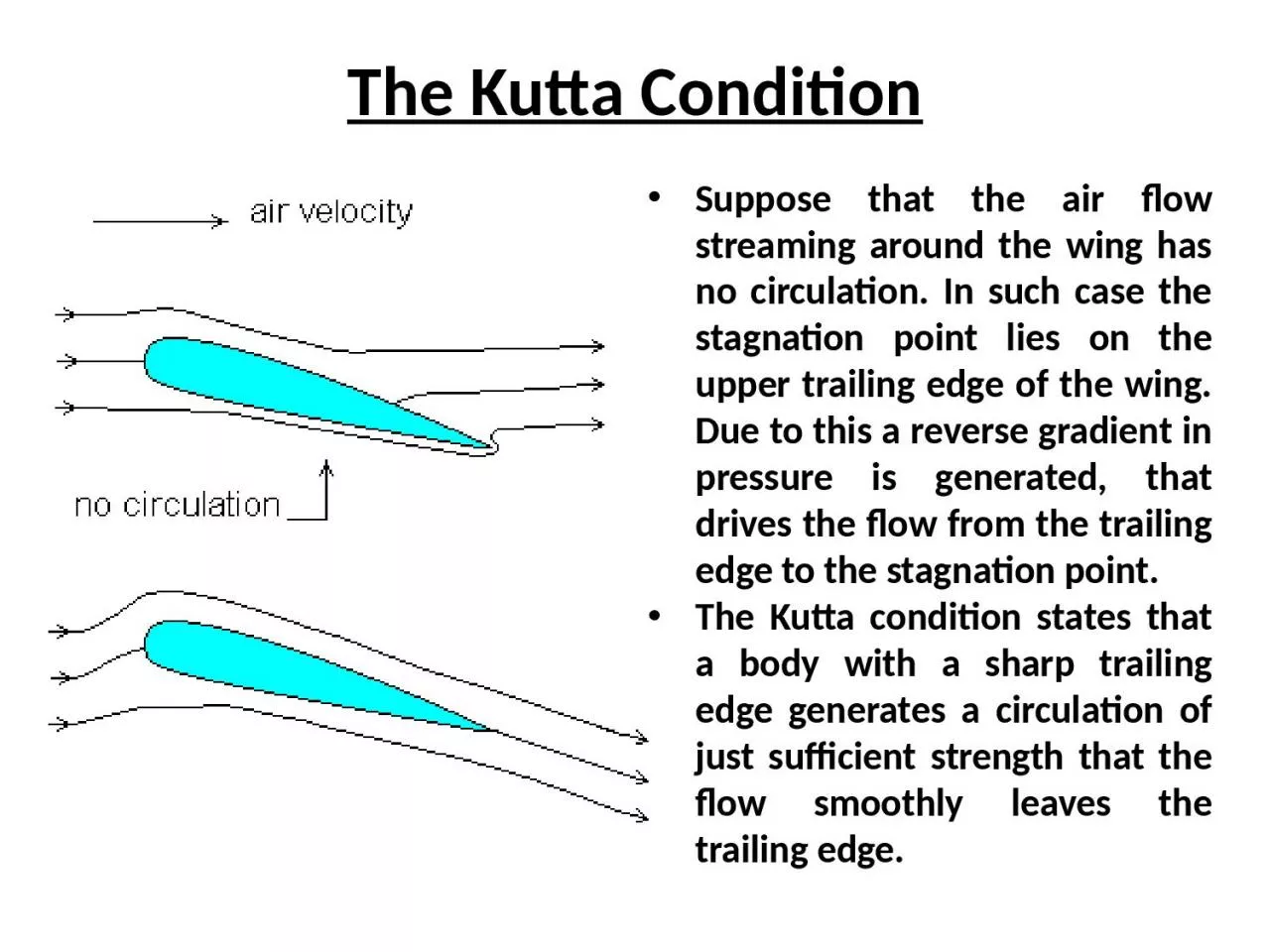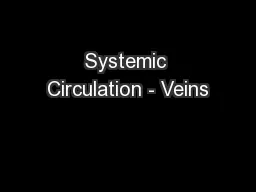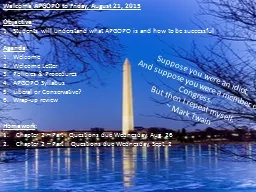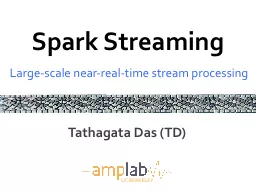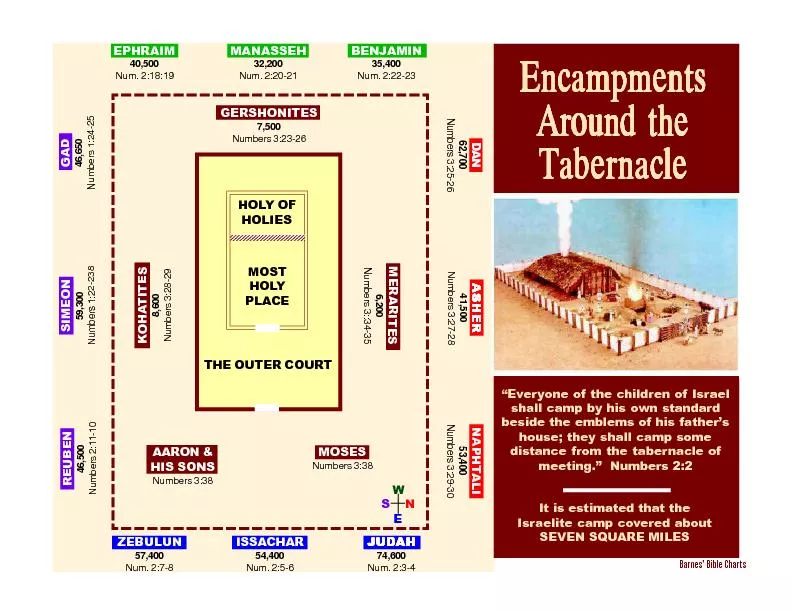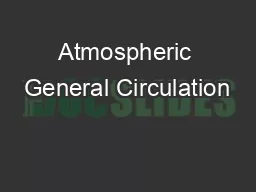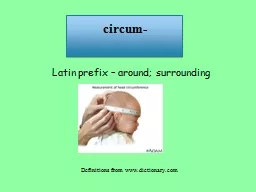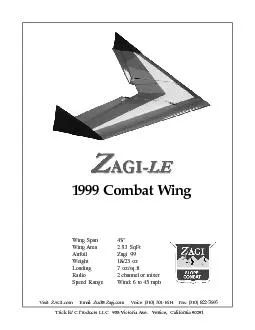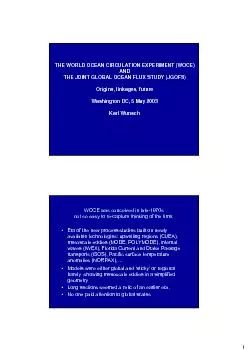PPT-The Kutta Condition Suppose that the air flow streaming around the wing has no circulation.
Author : candy | Published Date : 2024-02-09
The Kutta condition states that a body with a sharp trailing edge generates a circulation of just sufficient strength that the flow smoothly leaves the trailing
Presentation Embed Code
Download Presentation
Download Presentation The PPT/PDF document "The Kutta Condition Suppose that the a..." is the property of its rightful owner. Permission is granted to download and print the materials on this website for personal, non-commercial use only, and to display it on your personal computer provided you do not modify the materials and that you retain all copyright notices contained in the materials. By downloading content from our website, you accept the terms of this agreement.
The Kutta Condition Suppose that the air flow streaming around the wing has no circulation.: Transcript
Download Rules Of Document
"The Kutta Condition Suppose that the air flow streaming around the wing has no circulation."The content belongs to its owner. You may download and print it for personal use, without modification, and keep all copyright notices. By downloading, you agree to these terms.
Related Documents

